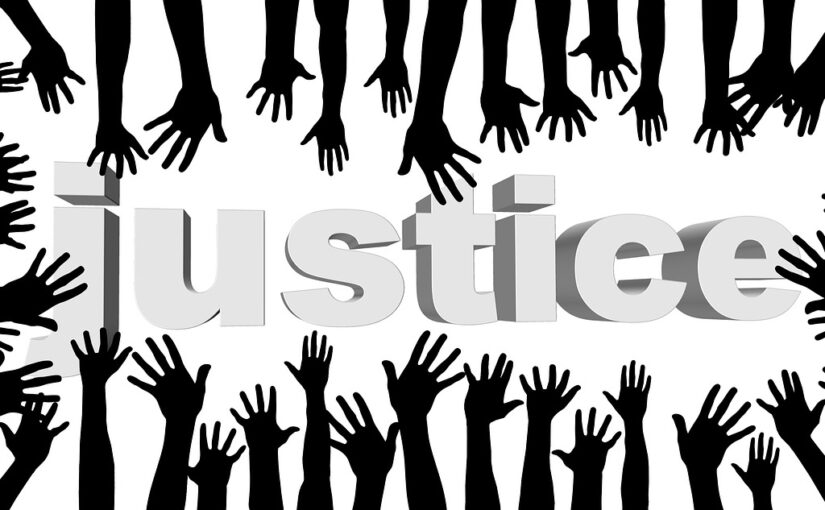Table of Contents
Introduction To Child Support
Understanding what child support is and how it may affect the parent responsible for the payments is just the beginning. It is a legal obligation that non-custodial parents are required to fulfill to contribute to the financial upbringing and well-being of their children after separation or divorce. It relies on monetary payments intended to cover various expenses, including housing, food, clothing, education, healthcare, and other necessities essential for a child’s growth and development.
It aims to ensure that both parents bear the responsibility of financially supporting their children, regardless of the custodial arrangement. It plays a crucial role in safeguarding the welfare and best interests of children affected by parental separation or divorce. It helps offset the financial impact of the dissolution of the family on children, ensuring they maintain access to essential resources and opportunities needed for their physical, emotional, and psychological well-being.
By providing financial support, children maintain stability and continuity in their lives, enabling them to thrive and reach their full potential despite familial changes.
It is important to note that non-payment leads to significant consequences for all parties involved, having legal, financial, emotional, and societal impacts. Addressing the issue of non-payment is crucial to uphold the rights of children and ensure their continued access to the resources and support they need for healthy development.
Legal Consequences Of Not Paying Child Support
Family courts employ various enforcement mechanisms to compel compliance with support orders. These mechanisms may include wage garnishment, where a portion of the non-paying parent’s income is automatically withheld by their employer and redirected to the custodial parent to cover support obligations. Additionally, authorities may intercept tax refunds or impose liens on the non-paying parent’s property to satisfy unpaid arrears.
In cases of persistent non-compliance, family courts have the authority to suspend various licenses, such as driver’s licenses, professional licenses, and recreational licenses, as a means of coercing compliance with support orders. License suspension can significantly impact the non-paying parent’s ability to work, travel, or engage in certain activities, serving as a powerful incentive to meet their financial obligations.
Failure to comply with support orders can result in contempt of court charges, where the non-paying parent is held in contempt for violating a court order. Contempt sanctions may include fines, community service, or even imprisonment. While imprisonment is typically considered a last resort, courts may impose incarceration as a means of coercing compliance with child support orders in cases of egregious non-payment or willful refusal to meet financial obligations. If you’ve dealt with any of these situations, you know how serious the ramifications can be.
Financial Impact
Unpaid support accrues interest over time, increasing the total amount owed by the non-paying parent. This interest accrual compounds the financial burden on the non-paying parent, making it increasingly difficult to catch up on missed payments and eliminate outstanding arrears.
Non-payment can also have detrimental effects on the non-paying parent’s credit score, as delinquent payments may be reported to credit bureaus. A lower credit score can hinder the non-paying parent’s ability to obtain loans, credit cards, or housing, impacting their financial stability and future opportunities.
The failure to pay child support can begin a cycle of poverty for both the non-paying parent and the child. Financial instability resulting from non-payment may lead to increased stress, anxiety, and hardship for the custodial parent and child, making it challenging to meet basic needs and achieve financial security.
When custodial parents and children do not receive adequate financial support due to non-payment, they may rely on public assistance programs to meet their basic needs. This reliance places a strain on governmental resources and taxpayer dollars, as public funds are allocated to support families in need due to non-payment of child support.
Emotional Toll
Custodial parents may experience heightened stress and anxiety due to the financial strain caused by non-payment of child support. The constant worry about meeting their children’s needs and providing for their well-being can take a toll on their mental health and overall quality of life. Custodial parents may also harbor feelings of resentment towards the non-paying parent for failing to fulfill their financial obligations and contribute to their children’s upbringing. This resentment may stem from the perceived lack of responsibility or commitment on the part of the non-paying parent, adding to the tensions and conflict between co-parents.
Children may experience feelings of abandonment and insecurity when one of their parents fails to provide financial support. The absence of consistent support from a non-paying parent can leave children feeling neglected or unimportant, affecting their sense of security and stability. The lack of financial support from a non-paying parent can negatively impact children’s self-esteem and psychological well-being. They may internalize feelings of unworthiness or inadequacy, leading to emotional distress and psychological issues that can persist into adulthood.
Impact on Children
Non-payment of child support jeopardizes children’s access to basic necessities such as food, clothing, shelter, and healthcare. The lack of financial support can compromise their physical health and well-being, putting them at risk of poverty, homelessness, or inadequate nutrition. Financial constraints resulting from non-payment of child support may limit children’s access to educational opportunities, extracurricular activities, and enrichment programs. The inability to participate in activities outside of school can hinder their social, emotional, and cognitive development, impacting their academic achievement and future prospects.
The absence of financial support can have long-term consequences on children’s development and relationships. Children may struggle to form trusting relationships or develop healthy attachments due to feelings of abandonment or insecurity. Moreover, the financial instability resulting from non-payment can perpetuate a cycle of poverty, limiting their opportunities for success and upward mobility in the future.
Societal Stigma
Non-compliant parents may face judgment, criticism, and social stigma from their peers, family members, and society at large for failing to meet their responsibilities. The stigma associated with non-payment of can lead to social isolation, ostracism, and negative perceptions of absent or non-custodial parents, contributing to feelings of shame and guilt. Parents who do not support their children may be socially ostracized and subjected to negative stereotypes, perpetuating misconceptions about absent or non-custodial parents. These stereotypes may portray these parents as irresponsible, selfish, or uncaring, further marginalizing them within their communities.
The societal cost of unpaid support extends to taxpayers, as public resources may be allocated to support families in need due to non-payment. When custodial parents and children do not receive adequate financial support, they may rely on public assistance programs, such as welfare benefits placing a burden on governmental resources and taxpayer dollars.
The societal cost of unpaid child support includes the long-term impact on children’s well-being and future prospects, as they may face greater challenges in overcoming poverty, achieving academic success, and breaking the cycle of intergenerational disadvantage.
Legal Recourse for Non-Paying Parents
Non-paying parents facing financial hardships may seek to modify child support orders through the family court system to reflect their changed circumstances. By petitioning the court for a modification, non-paying parents can request adjustments to the amount of child support owed based on factors such as changes in income, employment status, or family dynamics.
Parents struggling to meet their child support obligations may seek legal assistance and advocacy to navigate the legal system and address their financial challenges. Legal aid organizations, pro bono attorneys, or family law clinics may provide non-paying parents with access to legal resources and representation to help them understand their rights and options for addressing child support issues.
Providing non-paying parents with access to education, support, and resources may help encourage compliance with child support obligations and address underlying issues contributing to non-payment. Education and outreach efforts can raise awareness about the importance of child support compliance and inform non-paying parents about available resources and services to help them meet their financial obligations. Support programs, such as parenting classes, financial literacy workshops, or job training initiatives, can empower non-paying parents to overcome barriers to compliance and take proactive steps towards fulfilling their responsibilities to their children.
Collaborative Solutions
Effective communication and cooperation between co-parents are essential for addressing challenges related to child support and fostering a supportive co-parenting relationship focused on the best interests of the children. By maintaining open lines of communication and working together to find solutions to child support issues, co-parents can minimize conflict and promote a positive co-parenting environment that prioritizes the well-being and needs of their children.
Mediation and conflict resolution strategies may help non-paying parents and custodial parents resolve disputes related to child support in a collaborative and constructive manner. Mediation allows co-parents to work with a neutral third party to negotiate and reach agreements on support issues outside of court, reducing the need for adversarial legal proceedings and promoting mutually satisfactory outcomes that prioritize the interests of the children.
Access to community resources and support networks can provide struggling families with the support and resources they need to navigate challenges related to child support and parental separation. Community organizations, social service agencies, and nonprofit groups may offer a range of services, such as financial assistance, legal aid, counseling, or parenting support, to help families in need access the resources and support they need to address support issues and overcome barriers to compliance.
10 Point Checklist: Things To Remember Around Child Support
1. Understand your legal obligation: Familiarize yourself with the terms of the support order issued by the court, including the amount of the payments, the frequency of payments, and any other specific requirements or conditions.
2. Prioritize support payments: Make child support payments a priority in your budgeting and financial planning to ensure timely and consistent payments to support your child’s needs.
3. Set up automatic payments: Consider setting up automatic payments through your bank or financial institution to ensure that payments are made on time each month, minimizing the risk of missed or late payments.
4. Keep detailed records: Maintain accurate records of all payments made, including dates, amounts, and any receipts or confirmation numbers. This documentation can serve as proof of compliance in case of any disputes or legal proceedings.
5. Communicate openly: Maintain open and respectful communication with the custodial parent regarding support payments, including any changes in financial circumstances or challenges that may affect your ability to meet your obligations.
6. Seek legal advice if needed: If you encounter any difficulties or have questions about your obligations, consider seeking legal advice from a qualified attorney specializing in family law to ensure that you understand your rights and responsibilities.
7. Report changes in circumstances: Notify the appropriate authorities, such as the family court or enforcement agency, of any significant changes in your financial situation, employment status, or family circumstances that may impact your ability to pay support.
8. Stay informed about modifications: Stay informed about any modifications or updates to the child support order issued by the court, and comply with any changes or adjustments to the payment terms as required.
9. Consider the child’s needs: Remember that payments are intended to meet the child’s needs and contribute to their well-being. Keep the child’s best interests in mind when making financial decisions and fulfilling your obligations.
10. Seek support if necessary: If you are experiencing financial hardship or difficulties meeting your child support obligations, seek support from friends, family members, or community resources to help you navigate challenges and fulfill your responsibilities as a parent.
Conclusion
Non-payment leads to significant legal, financial, emotional, and societal consequences for all parties involved, particularly children. Addressing the issue of non-payment is crucial to uphold the rights of children and ensure their continued access to the resources and support they need for healthy development.
Fulfilling support obligations is essential for ensuring the well-being and development of children following parental separation or divorce. By providing financial support, non-custodial parents contribute to maintaining stability and continuity in their children’s lives, enabling them to thrive and reach their full potential despite familial changes.
It is imperative for parents to prioritize support compliance and work collaboratively to address challenges related to child support, fostering healthier families and communities in the process. By prioritizing the needs of their children and fulfilling their financial obligations, parents can contribute to creating a supportive and nurturing environment where children can grow, learn, and thrive.
































































